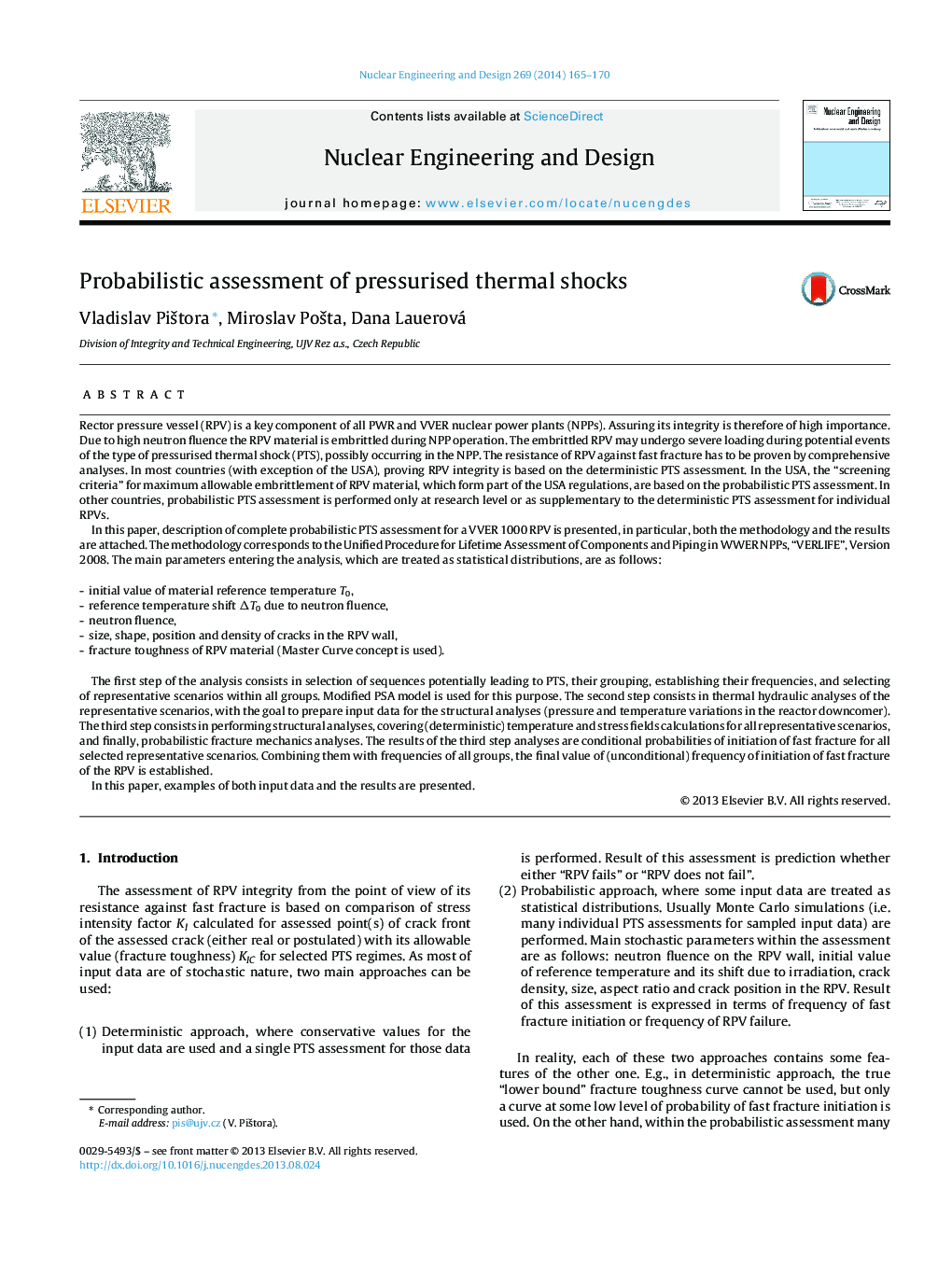| کد مقاله | کد نشریه | سال انتشار | مقاله انگلیسی | نسخه تمام متن |
|---|---|---|---|---|
| 296608 | 511730 | 2014 | 6 صفحه PDF | دانلود رایگان |
Rector pressure vessel (RPV) is a key component of all PWR and VVER nuclear power plants (NPPs). Assuring its integrity is therefore of high importance. Due to high neutron fluence the RPV material is embrittled during NPP operation. The embrittled RPV may undergo severe loading during potential events of the type of pressurised thermal shock (PTS), possibly occurring in the NPP. The resistance of RPV against fast fracture has to be proven by comprehensive analyses. In most countries (with exception of the USA), proving RPV integrity is based on the deterministic PTS assessment. In the USA, the “screening criteria” for maximum allowable embrittlement of RPV material, which form part of the USA regulations, are based on the probabilistic PTS assessment. In other countries, probabilistic PTS assessment is performed only at research level or as supplementary to the deterministic PTS assessment for individual RPVs.In this paper, description of complete probabilistic PTS assessment for a VVER 1000 RPV is presented, in particular, both the methodology and the results are attached. The methodology corresponds to the Unified Procedure for Lifetime Assessment of Components and Piping in WWER NPPs, “VERLIFE”, Version 2008. The main parameters entering the analysis, which are treated as statistical distributions, are as follows:-initial value of material reference temperature T0,-reference temperature shift ΔT0 due to neutron fluence,-neutron fluence,-size, shape, position and density of cracks in the RPV wall,-fracture toughness of RPV material (Master Curve concept is used).The first step of the analysis consists in selection of sequences potentially leading to PTS, their grouping, establishing their frequencies, and selecting of representative scenarios within all groups. Modified PSA model is used for this purpose. The second step consists in thermal hydraulic analyses of the representative scenarios, with the goal to prepare input data for the structural analyses (pressure and temperature variations in the reactor downcomer). The third step consists in performing structural analyses, covering (deterministic) temperature and stress fields calculations for all representative scenarios, and finally, probabilistic fracture mechanics analyses. The results of the third step analyses are conditional probabilities of initiation of fast fracture for all selected representative scenarios. Combining them with frequencies of all groups, the final value of (unconditional) frequency of initiation of fast fracture of the RPV is established.In this paper, examples of both input data and the results are presented.
Journal: Nuclear Engineering and Design - Volume 269, 1 April 2014, Pages 165–170
